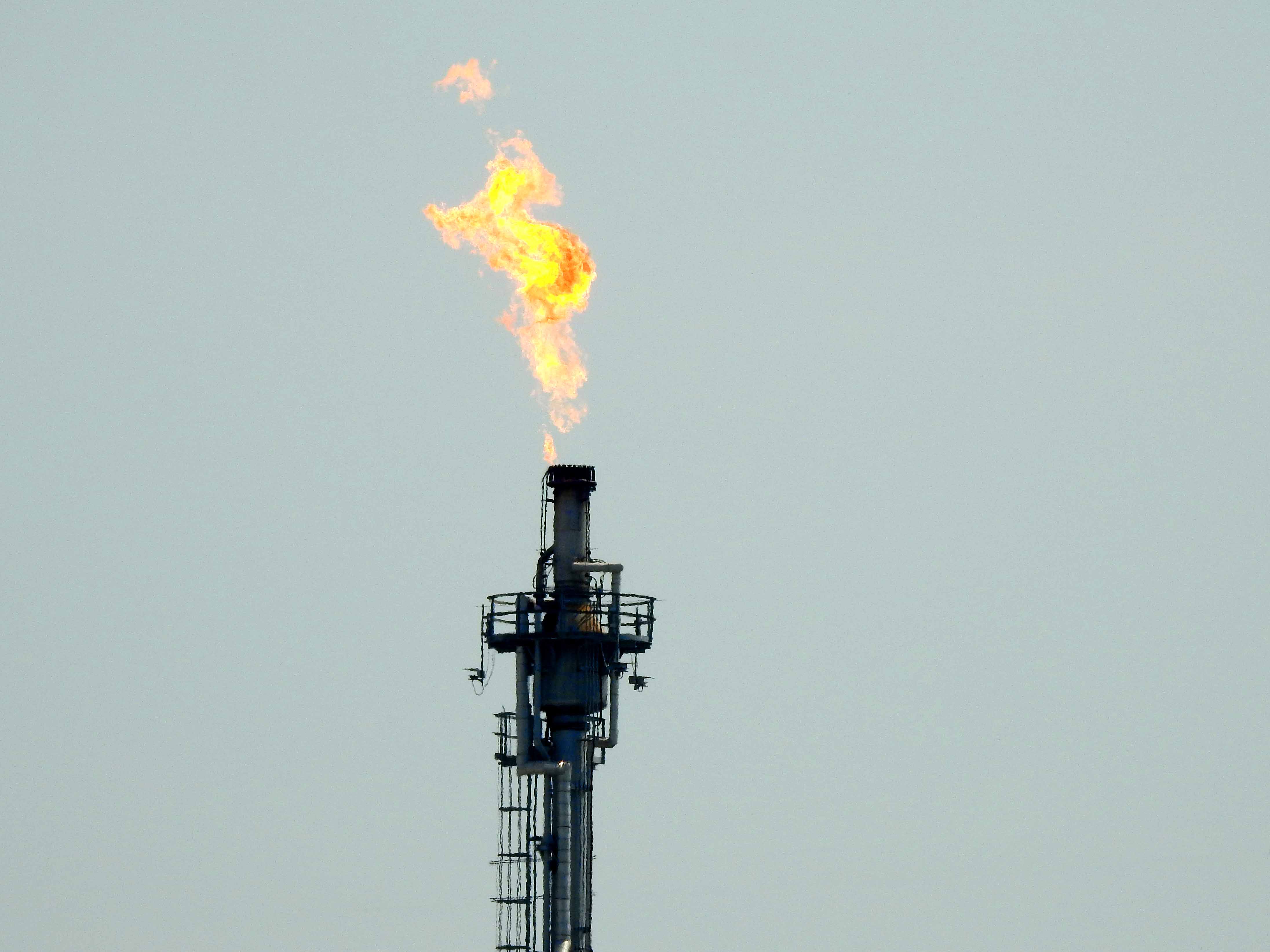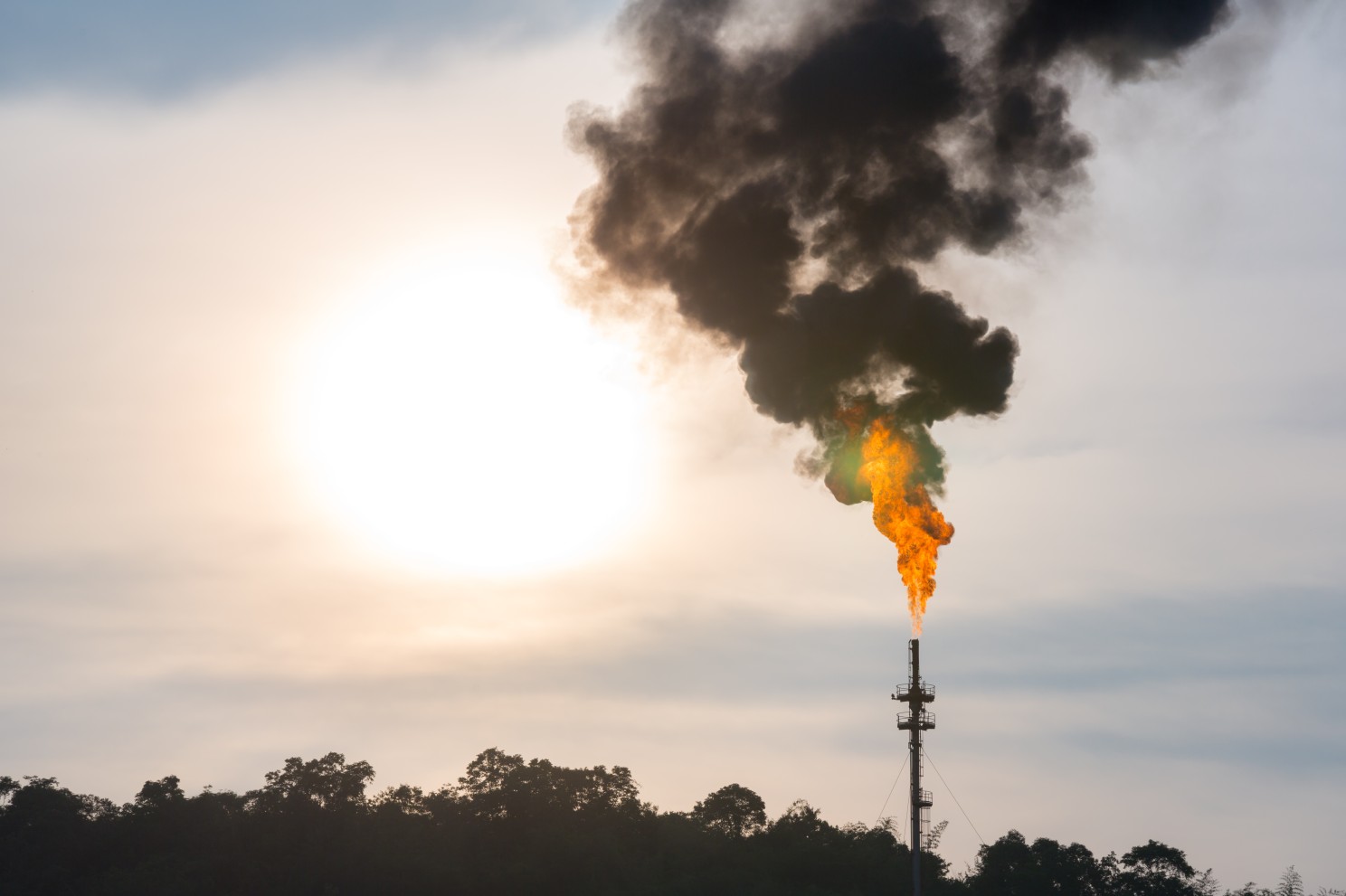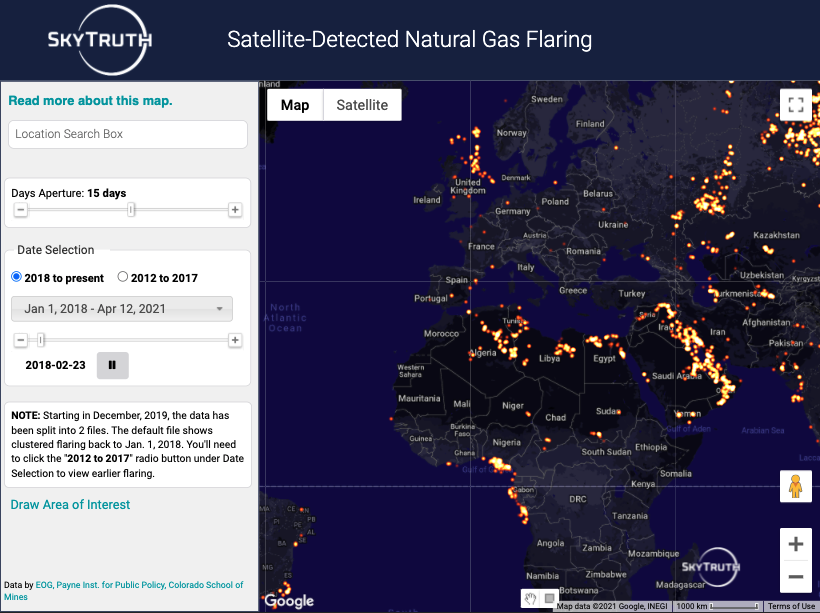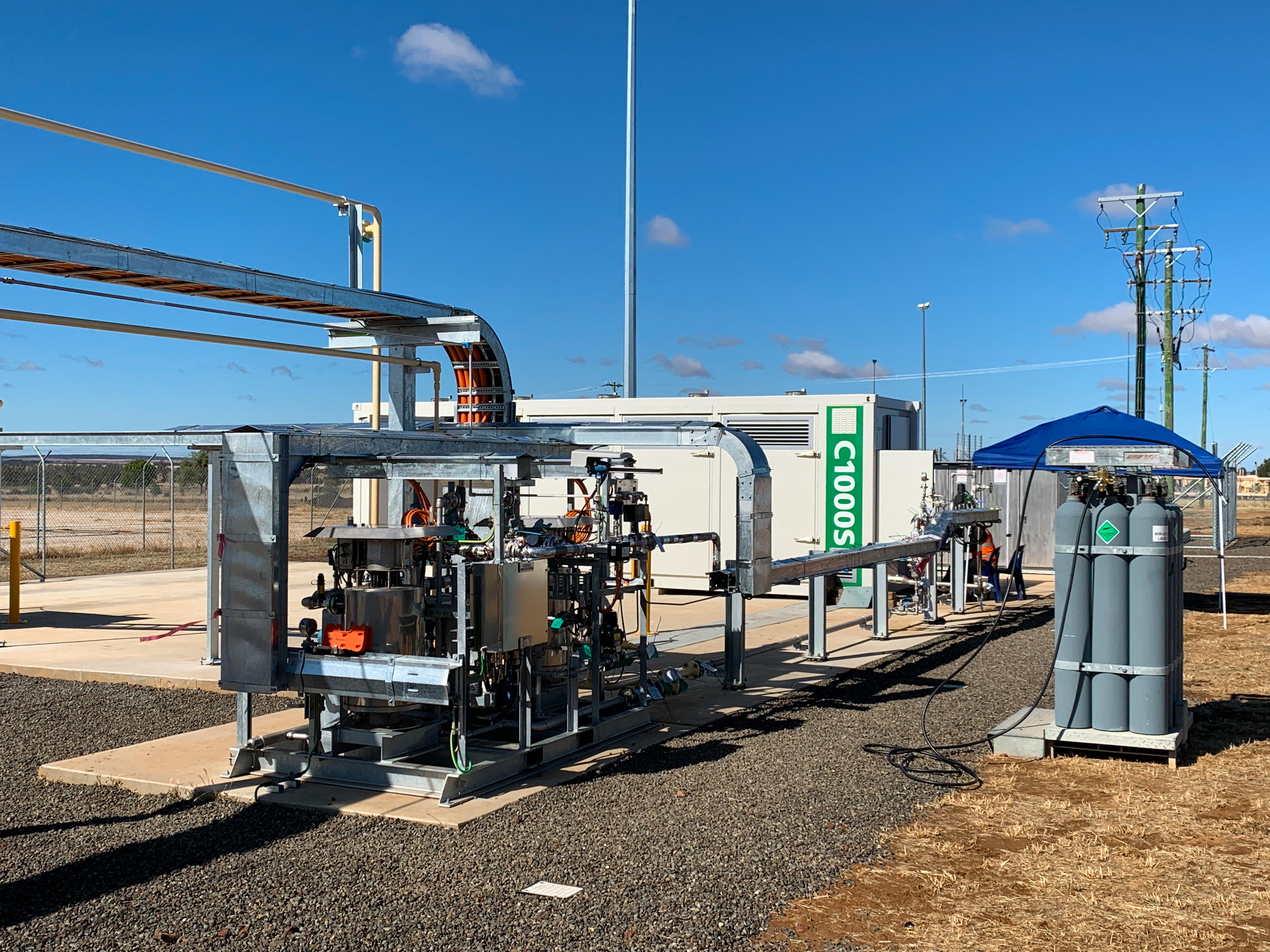Gas Flaring
Gas flaring is defined as the burning of the gas that comes out of the ground during oil extraction and it is a practice old as oil production itself. According to the United States Environmental Protection Agency (US EPA), “natural gas, propane, ethylene, propylene, butadiene, and butane constitute over 95 percent of the waste gases flared”.
 Gas flaring
Gas flaring
Gas flaring occurs due to a variety of reasons but here some of the most common ones that The World Bank points out:
- Safety Reasons: Dealing with excessive and variable pressures is often part of oil and gas extraction and processing operations and gas flaring helps de-pressurise equipment and reduce the impact of such variation, by combusting the excess gas.
- Economic and Technical Reasons: Since oil fields are often located in very remote locations, it can be very difficult from both a logistical and economic perspective to transport associated gas to a place where you process and use it.
- Regulatory Reasons: In rare cases, while it might make sense to capture and utilise associated gas, the laws of some countries might forbid or restrict companies’ ability to commercialise that gas. Regulations may also be quite unclear about how associated gas can be utilised commercially, which may create confusion about how such gas can be handled.
There are also different types of flaring that occurs such as routine flaring, which refers to gas flared during standard oil extraction operations, and it is the one that is most avoidable and easiest to reduce. As Blackridge Research points out, non-routine flaring refers to “intermittent flaring (planned or unplanned) of short duration”, which is “required for stabilization when process parameters are outside the allowable design or operating limits”. Finally, gas that is combusted for safety reasons, is known as safety flaring, which helps prevent potential disasters such as fires.
Gas Venting
Gas venting refers to releasing associated gas directly into the atmosphere without combusting the gas, which can occur deliberately as an alternative to flaring or due to unforeseen conditions. An important differentiator is that venting cannot be seen whereas gas flaring is visible.
Venting can take place as a result of several processes relating to oil and gas development such as pipeline and tank repairs, well completion and maintenance, utilisation of natural gas-driven pneumatic pumps, liquids unloading on low-pressure gas wells, among others.
Environmental Effects
Gas flaring creates noise and air pollution and hence poses a significant threat to the environment. Black carbon particles, acetaldehyde, acrolein, benzene, formaldehyde, hexane, and polycyclic aromatic hydrocarbons (PAHs) like naphthalene are some of the pollutants often released due to gas flaring. Furthermore, during gas flares some of the gas is releases unburnt due to inefficient combustion and hence, flaring does directly result in methane emissions which have a global warming potential of 28 times worse than CO2 emissions over 100 years, and over 80 times worse over 20 years.
 Air pollution from gas flaring
Air pollution from gas flaring
Due to methane’s higher emissions potential, venting is considered far worse than flaring, as all of the methane is released into the atmosphere without being combusted. This is why the practice of venting is heavily restricted in Australia and is often only allowed when flaring is not an option, due to safety or technical reasons.
Mounting Pressure to Act
With ever increasing attention on climate change and its damaging effect on the planet, there is mounting pressure on countries and organisations to act on reducing and preventing gas flaring and venting. A great example of this is the “Zero Routine Flaring by 2030 (ZRF) Initiative” by the World Bank, which aims to end the persistent oil and gas industry practice of gas flaring by 2030. According to The World Bank, the initiative excludes safety flaring as it is “both small in volume and essential for the safe operation of oil and gas production facilities” and non-routine flaring due its “unforeseen” nature, but it still encourages companies to take strong measures “to minimize all types of flaring”.
There also now tools available to public that shine a light on this widespread practice such as SkyTruth’s flaring maps, which “show satellite detections of natural gas flaring across the entire planet”. According to SkyTruth, the map is “updated daily to add new infrared detections that are hot enough to be considered gas flares”.
 SkyTruth’s flaring maps
SkyTruth’s flaring maps
All of this means that companies and countries need to find ways to curb their gas flaring practices, to both reduce emissions and also to avoid potential public scrutiny, which is only set to intensify as time goes on and as we attempt to make progress on 2030 emissions reduction targets.
Alternatives to Flaring and Venting
Blackridge Research points out that there are various effective alternatives to flaring that can “benefit local communities, reduce an operator’s carbon footprint, and turn a wasted by-product into a revenue stream”:
- Power Generation: Recovering and treating associated gases to be used in “gas-driven micro and large turbines and steam-driven turbines” to generate electricity.
- Secondary oil recovery: Restoring natural formation pressure in aged wells, by reinjecting natural gas which would have otherwise been flared. This enhances “secondary oil recovery, and significantly reduces black carbon emissions from oil production.”
- Portable CNG facilities: Compressing methane derived from oil wells at high pressure to be “stored in cylinders as compressed natural gas (CNG) for use as a fuel for oil field activities or trucked to nearby gas-processing facilities”.
- Feedstock for petrochemical production: Some of the associated gases from oil drilling can be used as “the main raw material in the production of ammonia, methanol, glass, paint, rubber, syngas, etc.”
- Liquefied natural gas: Associated gases such as natural gas can be liquefied and sold to the local market for “domestic and industrial use.”
Optimal’s Experience & Microturbines
Optimal has had experience in the past with repurposing flare gas, especially with our AGL Wallumbilla project where AGL was looking for ways to utilise excess butane produced as a by-product of their LPG production, that has little or no commercial value. AGL approached Optimal Group to find a solution and together, we were able to develop a world-first Capstone C1000S microturbine that operates on 100% butane. The grid connected system not only supports the plant’s power requirements of 200kW, but also allows the exporting of 800kW of excess power onto the local electric utility grid.
 AGL Wallumbilla project
AGL Wallumbilla project
We believe microturbines are a great solution to eliminate gas flaring as they release 10 times fewer NOx emissions than flaring and usually pay for themselves in 2-3 years, unlike other pollution control equipment which are incurred as sunken costs to continue oil and gas development. Their ability to use associated gas without much gas pre-treatment also make them a better choice compared to something like a reciprocating engine, as this allows for better monetisation of the associated gas and reduces operations costs by not requiring extra equipment for fuel-cleaning. In addition, being able to run on a wide range of fuels with various calorific values means that the system will be more reliable and will have reduced down-times.
Sources
BBC. (2022, September 29). Gas flaring: What is it and why is it a problem? https://www.bbc.com/news/science-environment-63051458
Blackridge Research & Consulting. (2022, September 30). What is Gas Flaring? Definition, Types, Impact, Alternatives, and Future Outlook. https://www.blackridgeresearch.com/blog/what-is-gas-flaring-definition-types-impact-alternatives-and-future-outlook
Burke, J. (2020, December 1). Capstone Scores Follow-up Order. Power Progress. https://www.powerprogress.com/news/capstone-scores-follow-up-order/7012563.article
GCM Staff. (2018, March 29). Microturbines For Flare Gas-to-Energy Project. Gas Compression Magazine. https://gascompressionmagazine.com/2018/03/29/microturbines-for-flare-gas-to-energy-project/
SkyTruth. (2022, March 31). Flaring Maps and Data. https://skytruth.org/flaring/
The World Bank. (2021, September 16). Zero Routine Flaring by 2030 (ZRF) Initiative. https://www.worldbank.org/en/programs/zero-routine-flaring-by-2030/qna#1
The World Bank. (n.d.). Gas Flaring Explained. https://www.worldbank.org/en/programs/gasflaringreduction/gas-flaring-explained
United States Environmental Protection Agency. (2024). AP-42: Compilation of Air Emissions Factors from Stationary Sources. https://www.epa.gov/air-emissions-factors-and-quantification/ap-42-compilation-air-emissions-factors-stationary-sources
